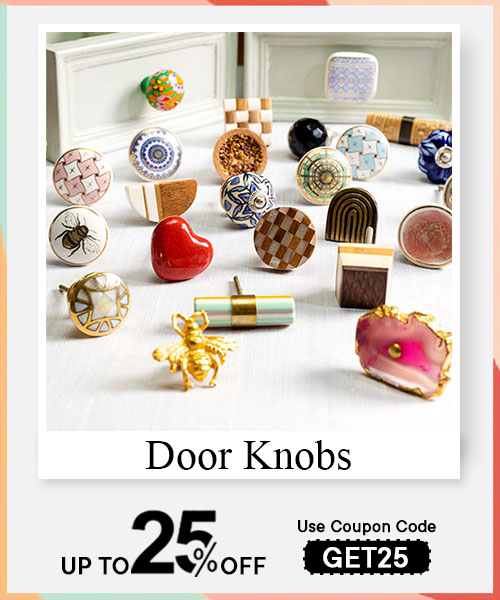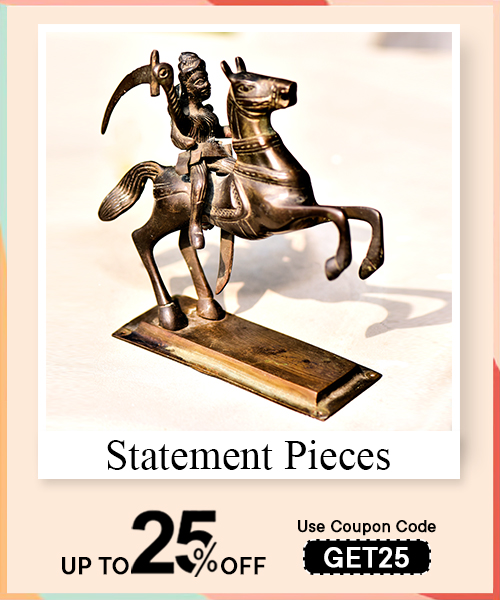Charcoal drawing, a timeless and versatile art form, has long captivated artists and art enthusiasts alike. With its deep, rich tones and remarkable ability to capture the interplay of light and shadow, charcoal offers a unique medium to explore the subtleties of form and texture. From the delicate, soft strokes that evoke a sense of tranquility to the bold, dramatic marks that create intense contrasts, charcoal provides an exceptional range of expression.
Much like a story unfolding on paper, charcoal drawings carry a texture that speaks not only through the visual but through the tactile nature of the medium itself. The grit of the charcoal against the surface creates an organic, almost intimate connection between the artist and their work. Whether used in sketching, shading, or even in more refined, detailed compositions, charcoal embodies both simplicity and complexity in its raw form. The beauty of charcoal art lies in its ability to embrace imperfections, allowing spontaneity to guide the process and encourage creative freedom.
For the artist, each stroke with charcoal is an exploration—an attempt to breathe life into a surface, to carve out emotions and depth with the flick of a wrist or the careful manipulation of pressure. It is a journey through contrasts and nuances, where shadows become as significant as light, and where the power of a few strokes can evoke a world of meaning.
Charcoal drawing is an art form that thrives on depth, contrast, and raw texture. Whether capturing the contours of a face or the folds of a fabric, the beauty of charcoal lies in its ability to create both delicate smudges and sharp, dramatic strokes. But where does one begin?
Before the first stroke, set the foundation. Pick a medium-textured paper—something that holds charcoal well but still allows blending. A set of charcoal pencils (soft, medium, and hard), vine charcoal for sketching, and compressed charcoal for deep blacks will serve you well. Kneaded erasers and blending stumps will help shape your work.
Every drawing begins with observation. Whether it's a still life, a figure, or an abstract piece, study how light interacts with the form. Pay attention to shadows, highlights, and mid-tones—charcoal thrives in the balance between these elements.
Start lightly. Use vine charcoal to lay out the basic shapes and proportions with a soft touch. Keep the strokes loose and gestural—at this stage, it's all about finding structure, not perfection. This is your roadmap, not the final piece.
Once satisfied with the sketch, begin layering. Work from light to dark, gradually increasing contrast. Use compressed charcoal for depth and a kneaded eraser to lift highlights. Smudging with fingers or blending tools can create softness, but be mindful—too much blending can make the drawing lifeless.
Charcoal is a medium of extremes. The sharp edge of a compressed stick can create striking details, while a soft swipe of a tissue can blur edges into atmospheric depth. Work back and forth between adding charcoal and lifting it away to find the balance that gives your piece character.
Once satisfied, step back. Assess the composition, adjust tones, and refine edges. Finally, use a fixative spray to seal your work, preventing smudging while preserving the charcoal's vibrancy.
Drawing with charcoal isn’t just about creating an image—it’s about letting the medium breathe, embracing its unpredictability, and allowing the piece to evolve with every stroke.
Read More : General Understanding of Scenery Painting
When working with charcoal, the choice of paper significantly impacts the outcome. A good charcoal paper should have enough texture (tooth) to hold the pigment while allowing smooth blending. Heavyweight papers like Canson Mi-Teintes, Strathmore 500 Series, and Fabriano Tiziano provide durability and depth. Newsprint is great for practice but lacks longevity. Toned papers add dimension, reducing the need for excessive shading. Rough textures create dramatic strokes, while smoother ones enhance detail. Ultimately, the right paper depends on the desired effect—bold contrasts need more tooth, while intricate work benefits from a finer surface. Experimentation refines artistic preference.
Using a graphite pencil for charcoal drawing requires balance and technique. Start with graphite for light sketches and outlines—its precision helps structure your composition. Avoid pressing too hard, as graphite creates a slick surface that resists charcoal. Layer charcoal over graphite for depth, using soft strokes and blending with a kneaded eraser or tissue. For contrast, reinforce shadows with charcoal while keeping highlights intact. Graphite works well for detailing, but excessive use can dull charcoal’s richness. Experiment with both, letting charcoal dominate the final layers for a bold, textured finish. Mastering this combination enhances dimension and artistic control.
To sharpen charcoal pencils, use a sharp craft knife or a sandpaper block instead of a regular sharpener. Carefully shave away the wood in small strokes, exposing more charcoal without breaking it. A fine sandpaper block helps refine the tip for precision.
To start with charcoal drawing, use light strokes to sketch the base structure, gradually building depth with layering and blending. Work from general shapes to details, utilizing different pressures for contrast. Use a kneaded eraser for highlights and a blending stump for smooth transitions. Experiment with textures, smudging, and erasing to understand its expressive potential.
Blending charcoal pencils requires control, patience, and an understanding of texture. Start with light strokes, layering gradually to build depth. Use a blending stump for smooth transitions, your fingertip for a natural blur, or tissue for a soft haze. Erasers refine edges and add highlights. Avoid overworking areas—charcoal is delicate. Vary pressure to create contrast, letting shadows emerge organically. Work from dark to light, preserving highlights early. Fixative prevents smudging but use it sparingly to retain richness. Experiment with cross-hatching before blending for unique textures. Let the strokes breathe, allowing each layer to settle into the grain of the paper.
Charcoal for drawing doesn’t go bad in the traditional sense, but its quality can degrade over time depending on storage conditions. If exposed to moisture, it can become brittle or crumbly, affecting its texture and application. Excessive dryness can make it too powdery, leading to uneven strokes. Proper storage—keeping it in a dry, cool place, preferably in an airtight container—helps maintain its usability. While aged charcoal might still work, it may not offer the same smooth blending or deep blacks as fresh sticks. In essence, it doesn’t expire, but handling and storage determine its longevity and performance.
Mixing graphite and charcoal requires balance, as they behave differently on paper. Graphite offers smooth, controlled lines, while charcoal provides rich, deep blacks with a grainy texture. Start with graphite for structure and details, then layer charcoal for depth. Use a kneaded eraser to blend and lift highlights. Avoid excessive pressure with graphite—it resists charcoal adhesion. Blend with a soft brush or tissue for seamless transitions. Charcoal works best for shadows, graphite for precision. Fixative can set layers, preventing smudging. Experiment with layering, letting each material complement the other rather than compete, creating dynamic contrasts and nuanced shading.
Erasing charcoal requires a gentle yet precise approach. Begin with a kneaded eraser—mold it into a point and dab the charcoal, lifting it gradually instead of rubbing. For finer details, use a precision eraser or an electric eraser to target specific areas. If the charcoal is deeply embedded, a soft brush or compressed air can help remove excess dust before erasing. Avoid excessive pressure, as it can smudge or damage the paper’s texture. If needed, a white vinyl eraser can lighten areas effectively. Finally, use a clean tissue or blending tool to smooth out any remaining transitions seamlessly.
A charcoal pencil is a versatile tool for sketching, shading, and adding depth to drawings. Start by sharpening it to a fine point for precise lines or keep it blunt for broader strokes. Use light pressure for delicate shading and heavier pressure for intense, dark tones. Blend with your fingers, a tissue, or a blending stump to create smooth gradients. Experiment with hatching, cross-hatching, and smudging techniques for texture. To erase, use a kneaded eraser for soft corrections or a hard eraser for crisp highlights. Work in layers, building depth gradually. Fix your work with a spray fixative to prevent smudging.
Charcoal drawing is a technique that employs charred wood to create deep contrasts, rich textures, and expressive strokes. It allows for fluidity, enabling both sharp precision and soft blending. The medium responds to pressure, creating bold, intense lines or delicate shading. Smudging, erasing, and layering build depth and realism, while highlights emerge by lifting charcoal with an eraser. This technique thrives on imperfection, embracing rawness and spontaneity. Artists often use compressed charcoal for defined marks and vine charcoal for softer transitions. The process is tactile, dynamic, and immersive, making it a favored choice for dramatic compositions and emotive sketches.
The three basic types of drawing charcoal are vine charcoal, compressed charcoal, and powdered charcoal. Vine charcoal is made from burnt grapevines or willow sticks, producing soft, delicate lines that are easy to blend and erase. Compressed charcoal is denser, offering rich, deep blacks with more control, often bound with a small amount of gum or wax. Powdered charcoal, finely ground, is ideal for creating broad tones, shading, and atmospheric effects. Each type serves a distinct purpose—vine for light sketches, compressed for defined lines, and powdered for smooth gradients—making them essential tools for artists exploring texture and contrast.
Read More : A Comprehensive Guide to Fabric Painting: Techniques, Tips, and Creative Ideas
To make a charcoal stick, start with dry willow, vine, or any softwood twigs. Cut them into uniform lengths, about 6 inches. Place them inside a small metal tin with a tight-fitting lid, punctured with tiny holes. Set the tin in a fire or a kiln at around 300-400°C. Let it burn slowly for 2-3 hours, allowing the wood to carbonize without turning to ash. Once the fire dies, let the tin cool completely before opening. Your charcoal sticks are now ready—light, rich in texture, and perfect for deep, expressive strokes in drawing or writing.
Yes, charcoal drawing is excellent for beginners. It’s a forgiving medium, allowing easy corrections and smooth blending. The rich, deep blacks create striking contrasts, making it ideal for learning shading and depth. Unlike colored mediums, charcoal focuses on values and textures, strengthening foundational drawing skills. It’s versatile—perfect for expressive strokes or fine details. However, it can be messy, requiring practice in control and smudging techniques. Beginners should start with simple shapes, gradually moving to complex subjects. With patience and experimentation, charcoal drawing can be both a rewarding and skill-enhancing experience for any aspiring artist.
For charcoal drawings, the ideal paper should have enough texture (tooth) to grip the medium while allowing smooth blending. Heavier-weight papers (100–160 gsm) prevent warping and tearing, making them a solid choice. Toned or off-white papers enhance depth, while acid-free options ensure longevity. Popular choices include Strathmore 400 Series, Canson Mi-Teintes, and Fabriano Tiziano, each offering distinct surfaces suited for expressive strokes and fine details. Smooth papers work well for precision, whereas rough textures support rich, bold marks. Ultimately, the best paper depends on artistic intent—experimenting with different surfaces refines technique and enhances creative expression.
Charcoal drawing demands patience, precision, and an understanding of light and shadow. Unlike pencils, charcoal is bold, unpredictable, and messy, requiring control and adaptability. The challenge lies in blending, erasing, and layering without losing depth. Beginners struggle with smudging and achieving fine details, but mastery comes with practice. The richness of charcoal allows for expressive textures, making mistakes part of the process. It’s difficult at first, yet rewarding as it fosters spontaneity and depth. The key is embracing imperfection—letting the medium guide you rather than forcing rigid control. With time, what seems daunting becomes an intuitive dance of contrasts.

The best drawing for beginners is one that builds confidence while teaching fundamental skills. Simple shapes, like cubes, spheres, and cylinders, help in understanding form and shading. Still life sketches—apples, cups, or books—develop observation skills. Line drawings, such as contour sketches, enhance hand control. Doodling and gesture drawings bring fluidity. Beginners should start with pencil sketches before experimenting with ink or colors. Reference photos aid accuracy, but freehand practice nurtures creativity. The goal isn’t perfection but progress. With patience and consistency, even a simple line transforms into expressive art. Every great artist once started with a single stroke.
To achieve a deep charcoal-dark shade, layer your approach. Start with a rich black base—fabric, canvas, or paper—then build depth using compressed charcoal or soft graphite, blending smoothly with a chamois or tissue. Layering is key; apply multiple coats, pressing slightly harder each time while controlling highlights with an eraser. Fixative can deepen the tone, locking in richness. For fabrics, opt for high-quality black dyes, ensuring saturation by soaking longer. In photography or digital art, contrast and shadows amplify darkness. True charcoal darkness isn’t just black—it’s depth, texture, and absence of light, refined through technique and patience.
Charcoal is generally safe to draw with, but precautions should be taken. It produces fine dust that can be inhaled, potentially irritating the lungs, especially in poorly ventilated spaces. Using a mask and ensuring airflow can minimize risks. Unlike some art materials, charcoal is non-toxic, making it safe for skin contact. However, excessive exposure, particularly to fixatives used to seal drawings, may introduce chemical concerns. Artists with respiratory sensitivities should opt for compressed charcoal over loose powder. While a timeless medium known for its deep blacks and rich textures, using it mindfully ensures both artistic freedom and personal safety.
Yes, hard charcoal is generally darker than soft charcoal. The density and compression of hard charcoal result in a richer, deeper black with a finer texture, making it ideal for precise detailing and controlled shading. In contrast, soft charcoal, though equally dark, spreads more easily and smudges readily, creating broader, more expressive strokes. Hard charcoal requires firmer pressure to achieve intense blacks, whereas soft charcoal effortlessly produces deep tones. The choice between the two depends on the artist’s intent—hard charcoal for sharp, crisp lines and soft charcoal for fluid, dramatic shading. Both, however, share the ability to create striking contrast.
A good sketchbook for charcoal should have heavyweight, toothy paper that grips the medium well, allowing for deep blacks and smooth blending. Look for acid-free, 90-100 lb (150-200 gsm) paper with a rough texture, such as Strathmore 400 Series or Canson XL. Spiral-bound options provide flexibility, while hardcover books offer durability. Opt for a larger size—at least 9x12 inches—to allow expressive strokes. Perforated pages are useful for easy removal. Avoid overly smooth or glossy paper, as charcoal needs texture to adhere. Ultimately, the best sketchbook balances tooth, weight, and format to support dynamic, layered, and rich charcoal work.
Charcoal drawing is a beautifully chaotic art form—raw, expressive, and undeniably messy. The fine black dust clings to fingertips, smudges across the page, and lingers in the air like a shadow of creation. Every stroke carries unpredictability; a single touch can blur, deepen, or completely alter an image. Smears stain clothing, darken the edges of hands, and settle into creases like remnants of forgotten thoughts. Yet, within this disorder lies its magic—depth, contrast, and emotion emerge effortlessly. Charcoal’s mess isn’t just physical; it’s part of the artistic process, a reminder that true expression often thrives in imperfection.
Charcoal and pencil drawings differ in texture, depth, and technique. Charcoal, rich and bold, creates deep contrasts and expressive strokes, making it ideal for dramatic compositions. It smudges easily, allowing soft transitions but requiring fixatives for permanence. Pencil, precise and controlled, offers fine details with varying grades of hardness. It’s cleaner, more erasable, and suited for intricate sketches. While charcoal lends itself to raw intensity and atmospheric shading, pencil drawings lean towards refined precision. The choice depends on artistic intent—charcoal for emotion and spontaneity, pencil for structure and clarity. Both mediums, however, hold unique artistic value in visual storytelling.
To smooth out charcoal, start by layering softly with light pressure, gradually building tones. Use a blending stump, tissue, or soft brush to merge strokes seamlessly. Avoid over-rubbing, which can lift pigment. For subtle transitions, use your fingers sparingly or a chamois for broader areas. Layer with a kneaded eraser to refine highlights, dabbing gently to lift excess charcoal. Work from dark to light, ensuring depth while maintaining texture. Fixative helps set layers without disturbing the surface. Experiment with cross-hatching and circular motions for a natural flow. Mastering control over pressure and blending refines the finish, creating seamless gradients.
Charcoal comes in various types, each serving distinct purposes. The five main types are lump charcoal, briquettes, binchotan, activated charcoal, and coconut shell charcoal. Lump charcoal, made from hardwood, burns hot and fast, ideal for grilling. Briquettes, a mix of charcoal dust and binders, offer consistent heat and longer burn time. Binchotan, a high-quality Japanese charcoal, burns clean with minimal smoke. Activated charcoal, processed for high porosity, is used in filtration and medicine. Coconut shell charcoal, derived from coconut husks, is eco-friendly and burns efficiently. Each type serves specific needs, from cooking to purification and industrial applications.
Choosing the right charcoal pencil depends on the texture, depth, and detail you want in your drawing. Soft charcoal pencils (6B-8B) create rich, deep blacks and smooth shading, ideal for dramatic contrasts. Medium (2B-4B) balances detail and softness, perfect for layering and mid-tones. Hard (H) pencils offer precision for fine lines and intricate textures. Consider brands like General’s, Faber-Castell, or Derwent for consistent quality. Blending with a tortillon or fingers enhances smooth transitions. For highlights, a kneaded eraser lifts charcoal effectively. Experimenting with different grades refines your technique, ensuring expressive and dynamic artwork with controlled depth and contrast.
Charcoal art dates back to prehistoric times, with early humans using burnt sticks to create cave paintings, such as those in Lascaux, France, over 30,000 years ago. While no single person can be credited with its invention, Renaissance artists like Leonardo da Vinci and Michelangelo refined its use, employing charcoal for sketches and studies. Over time, artists developed techniques to manipulate its texture, depth, and contrast. Modern charcoal art evolved with compressed and vine charcoal, offering greater control. From primitive storytelling to contemporary fine art, charcoal remains a timeless medium, blending raw expression with striking visual impact.
Charcoal and pastels, though both used for artistic expression, differ in texture, application, and effect. Charcoal, made from burnt wood, is deep black, powdery, and smudges easily, creating rich contrasts and expressive strokes. It excels in monochromatic sketches, offering a raw, dramatic feel. Pastels, composed of pigment and a binder, are vibrant and soft, blending smoothly for layered color effects. They range from hard to soft, allowing precision or painterly depth. While charcoal demands careful handling due to its dustiness, pastels invite bold color play. Both mediums evoke emotion uniquely—charcoal through stark intensity, pastels through luminous, textured hues.
Art charcoal is made by slowly burning wood in a low-oxygen environment to remove moisture and volatile compounds, leaving behind pure carbon. Willow and vine are common choices due to their fine grain and smooth texture. The process involves controlled pyrolysis, where the wood is heated at high temperatures without catching fire. Once cooled, the charcoal is cut, shaped, and sometimes compressed into sticks or pencils using a binder like gum arabic. This results in different grades—soft, medium, and hard—each offering varied depth and richness. Artists prefer charcoal for its deep blacks, blendability, and ability to create expressive textures.
Soft charcoal is a versatile drawing medium known for its rich, deep blacks and smooth texture. Made from slow-burned willow or vine wood, it offers a velvety application, ideal for expressive shading and blending. Unlike hard charcoal, which provides precision, soft charcoal allows for fluid, dynamic strokes, making it a favorite among artists for sketches, portraits, and dramatic contrasts. Its delicate nature smudges easily, enabling intricate tonal variations but requiring fixatives for preservation. Soft charcoal embodies spontaneity, where control meets chaos, capturing raw emotion and depth in every stroke—perfect for those who embrace imperfection as part of their artistic expression.
Charcoal is made by slowly burning wood in a low-oxygen environment, leaving behind pure carbon. Artists’ charcoal comes in various forms—vine, compressed, and powder—each with distinct textures and densities. A charcoal pencil is crafted by encasing compressed charcoal in a wooden barrel, offering precision with less mess. White charcoal, often made from calcium carbonate or chalk, is used for highlights in drawings, especially on toned or black paper. It contrasts with black charcoal, enhancing depth and dimension. Artists use white charcoal for blending, shading, and creating luminous effects in portraiture, landscapes, and still-life compositions.
Charcoal has a deep-rooted history, tracing back over 30,000 years when early humans used it for cave art. Ancient civilizations, including the Egyptians and Chinese, employed it for medicine, metal smelting, and ink production. The Middle Ages saw its role in blacksmithing and gunpowder making, while the Industrial Revolution intensified its use in iron production. Over time, charcoal evolved into an essential fuel, artistic medium, and purification agent. Today, it remains integral in cooking, filtration, and metallurgy, blending tradition with modern applications. Its journey from primitive firewood to a refined resource reflects human ingenuity and adaptation across eras.
Drawing with charcoal can be a fun and expressive activity for kids. Start with soft charcoal sticks or pencils, as they’re easy to blend and erase. Use light strokes for sketching basic shapes, then darken areas for depth. Smudging with fingers or a tissue creates smooth shading, while an eraser helps add highlights. Encourage kids to experiment with pressure to control contrast. Newsprint or textured paper works best for rich effects. Most importantly, let creativity flow—charcoal is messy but forgiving! Clean hands with a damp cloth afterward. With practice, kids can bring their ideas to life in bold, dynamic strokes.
Drawing a face with charcoal for kids is about simplicity and fun. Start with a light oval outline. Sketch basic guides for eyes, nose, and mouth using soft strokes. Shape the eyes with simple curves, adding dark pupils for depth. Define the nose with minimal lines, just a shadow hinting at structure. Sketch a smile or neutral lips, blending softly for realism. Lightly shade around the face to create form, using fingers or a tissue to blend. Add hair with loose, flowing strokes. Encourage smudging and erasing for highlights. Keep it playful—charcoal is forgiving, and every face has character!
Creating charcoal art at home requires basic materials—charcoal sticks, an eraser, blending tools, and good-quality paper. Start by sketching lightly to establish the composition. Use the side of the charcoal stick for broad strokes and the tip for details. Blend with fingers, cotton, or a blending stump for smooth shading. Use an eraser to highlight areas and add depth. Experiment with different pressures and strokes to create texture. Fix your drawing with a spray fixative to prevent smudging. Charcoal allows expressive, bold, and dramatic effects, making it perfect for beginners and professionals alike.
Start with a small oval base to represent the firewood. Sketch logs crisscrossing each other and add curved lines for wood texture. Draw upward, wavy shapes to create flames, making sure they vary in height. Use soft, jagged strokes for a natural fire effect. Shade the bottom of the firewood with charcoal for depth. Blend the flames lightly to show the glow effect. Add tiny sparks around the fire with soft dots. Use an eraser to highlight flame edges for contrast. The key is to keep it simple yet dynamic, making it visually engaging for kids.
Charcoal drawing relies on techniques like blending, hatching, and erasing to create depth and realism. Start with a light outline, then use shading to build contrast. Blending with fingers, a stump, or cloth smooths textures. Hatching and cross-hatching add structure and depth. Lifting charcoal with an eraser creates highlights, while using the charcoal’s edge allows sharp, bold strokes. Smudging and layering enhance volume and softness. Charcoal’s expressive quality makes it ideal for dramatic effects, whether sketching portraits, landscapes, or abstract art. Understanding pressure control and contrast is crucial to mastering the medium.
Begin with a light pencil sketch of a circle. Identify a light source, then shade the opposite side of the sphere with a charcoal pencil. Gradually darken the edges while keeping the center slightly lighter. Blend with a tissue or stump for a smooth transition. Use an eraser to create highlights where light hits. Add a cast shadow beneath the sphere to make it appear three-dimensional. Keep the shading soft and gradual, ensuring smooth blending. Encourage kids to observe how real objects reflect light and shadow, helping them understand the basics of form and depth.
Yes, but not all drawing papers work equally well for charcoal. Textured paper, like rough or medium-grain surfaces, is ideal as it holds the charcoal particles better. Smooth paper can work, but it may not create rich textures. Heavier-weight paper prevents tearing when blending or erasing. Toned paper enhances highlights and depth, making the drawing more dynamic. Newsprint is good for practice but lacks durability. Experimenting with different papers helps find the best fit for specific styles. Choosing acid-free paper ensures long-lasting artwork without yellowing over time.
Charcoal drawing dates back over 30,000 years, with early examples found in prehistoric cave paintings. Ancient civilizations, including the Greeks and Egyptians, used charcoal for sketches and murals. During the Renaissance, artists refined charcoal techniques for realistic studies and preliminary sketches. By the 19th and 20th centuries, charcoal became a favored medium in fine art, portraiture, and expressive works. Today, it remains a fundamental drawing tool, valued for its deep blacks, blending ability, and dramatic contrasts. Its history spans from primitive storytelling to contemporary art, showcasing its timeless appeal and versatility.
Charcoal sticks are used for sketching, shading, and adding depth to drawings. They come in different forms—vine charcoal (soft, erasable), compressed charcoal (dense, darker), and pencil charcoal (precise, detailed). Artists use them to create bold lines, subtle gradients, and expressive textures. Charcoal sticks are excellent for quick studies, portraits, and atmospheric effects. Their softness allows easy blending, while their richness produces deep contrasts. They work well on textured paper and are perfect for both beginners and advanced artists. By adjusting pressure and strokes, artists can achieve dynamic, moody, or highly detailed works.
Start with light guidelines, drawing a basic shape of the nose. Identify the light source to place shadows correctly. Use soft strokes to outline nostrils and the bridge. Shade the sides of the nose to create depth, keeping the center lighter. Blend gently for a smooth transition. Darken the nostrils and highlight the tip using an eraser for a realistic effect. Avoid harsh outlines; instead, rely on tonal values. Layering charcoal gradually helps refine the structure. Observing real noses and practicing shading techniques will improve realism and accuracy.
Read More : Introduction to Mughal Harem Paintings
Begin by mapping out facial proportions lightly. Identify the light source, then shade gradually from dark to light, focusing on planes of the face. Use soft strokes for subtle shadows around the eyes, nose, and jawline. Blend with a stump or tissue for smooth skin texture. Darken the areas under the chin and hairline for depth. Highlight cheekbones and forehead with an eraser. Keep edges soft for a natural look. Avoid over-blending, as charcoal’s raw texture adds character. Layering and refining shadows enhance realism, making the portrait more lifelike.















